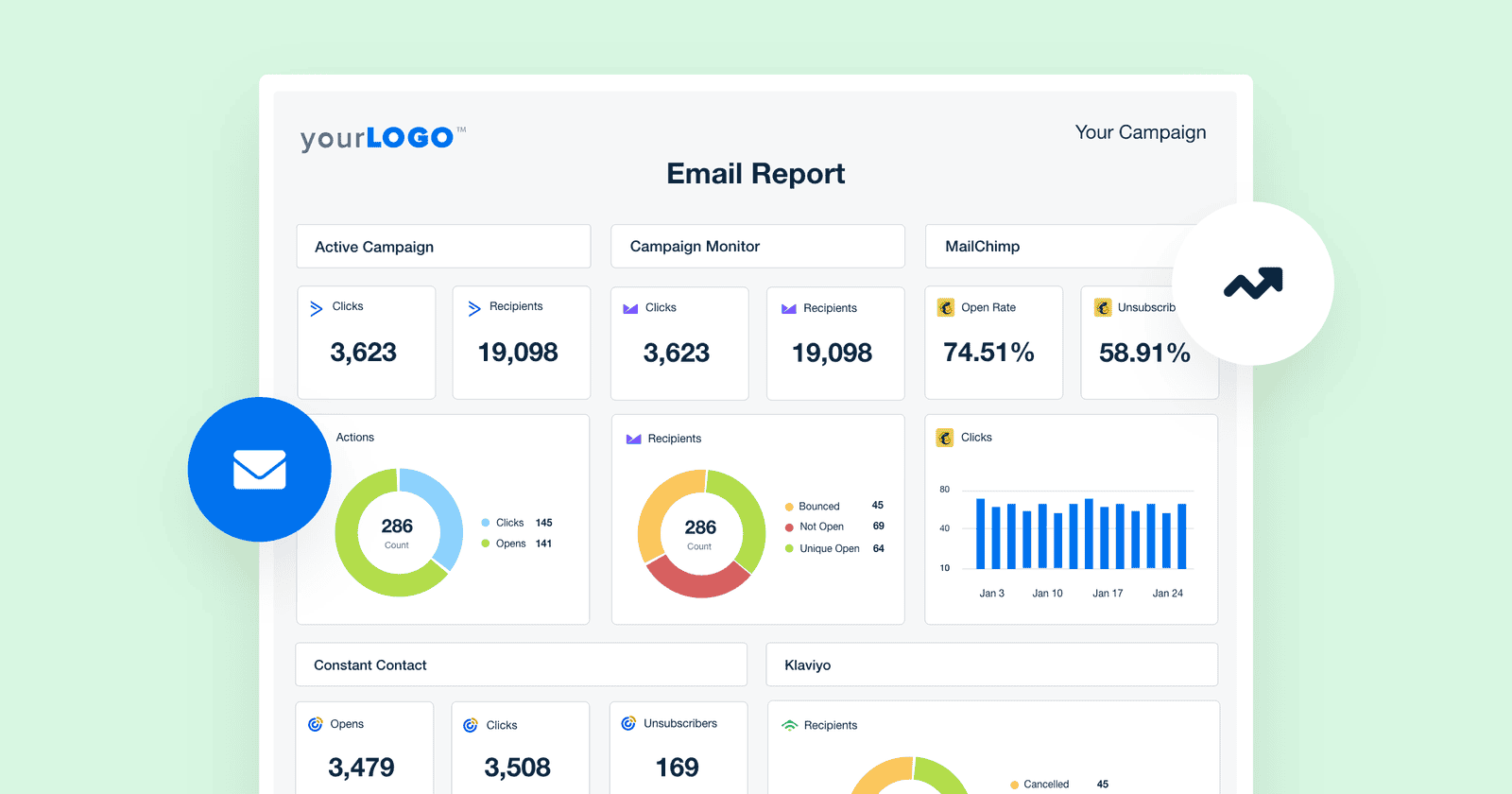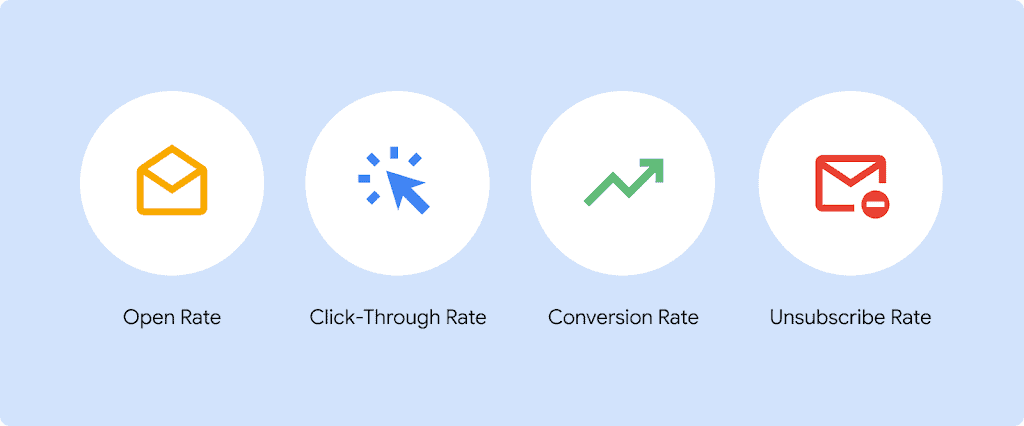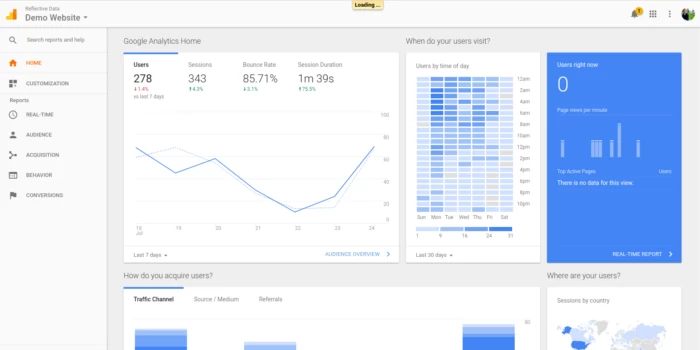Let’s talk about email marketing metrics! They’re like a secret weapon that can take your email game to the next level. I’m not talking about basic stuff here—we’re going deep, diving into advanced strategies to unlock the full potential of your campaigns. Ready? Let’s go! By carefully analyzing open rates, click-through rates, and conversion rates, you can gain invaluable insights into your audience’s preferences and behaviors. Implementing A/B testing will help you refine your content and design, allowing you to maximize your email marketing impact. Ultimately, leveraging these metrics effectively will not only enhance your strategy but also drive meaningful engagement and growth for your business. To truly maximize your email marketing efforts, it’s crucial to analyze open rates, click-through rates, and conversion rates in detail. One area worth focusing on is email subject line strategies, which can significantly impact your open rates and overall engagement. By experimenting with personalization, urgency, and creativity in your subject lines, you can grab your audience’s attention and boost your email performance.
Decoding the Matrix: The Crucial Email Metrics You Need to Track
Think of email metrics as your marketing GPS. They tell you exactly where you’re going, how you’re performing, and what you need to adjust to reach your destination—smashed those campaign goals!
There are tons of metrics out there, but let’s focus on the heavy hitters that truly matter:
1. Engagement Metrics: Gauging the Pulse of Your Audience
Engagement metrics tell you how much your subscribers are vibing with your content. Are they just glancing at your emails, or are they clicking, converting, and becoming raving fans? Here’s the breakdown:
- Open Rate: The Attention Grabber This metric tells you how many people are actually opening your emails. Your deliverability, subject lines, and send times are factors in it. Think of your subject line as the headline that hooks readers in. If it’s not catchy and relevant, people will just scroll right past.
- Click-Through Rate (CTR): Measuring the Click Appeal CTR shows the percentage of people who clicked on the links in your emails. It’s a measure of how engaging your content is and whether it motivates people to take action. To boost your CTR, ensure your emails look good on mobile devices and that your calls to action are clear and compelling.
- Conversion Rate: The Ultimate Success Metric This metric is all about the bottom line. It tells you how many people took the desired action after clicking on your email link, whether that’s making a purchase, signing up for a webinar, or downloading a resource. A high conversion rate means your email was effective in guiding people towards your goal.

2. List Health Metrics: Keeping Your Subscriber List Sparkling Clean
Think of your subscriber list as a garden. You need to tend to it regularly, remove weeds, and nurture the plants to thrive. That’s where list health metrics come in. They help you keep your list healthy and engaged, ensuring your messages reach the right people.
- Bounce Rate: Identifying Roadblocks to Inbox Heaven The bounce rate tells you how many emails couldn’t be delivered. This could be due to invalid email addresses or temporary issues like full inboxes. A high bounce rate means you need to clean up your list and make sure your emails actually get delivered.
- Unsubscribe Rate: Understanding Why People Say “See Ya!” The unsubscribe rate shows how many people decided to stop receiving your emails. While some unsubscribes are natural, a sudden spike could indicate problems with your content or sending frequency. Pay attention to this metric and adjust your strategy accordingly to keep your subscribers happy.
3. Growth Metrics: Charting the Expansion of Your Email Universe
Growth metrics show you how quickly your subscriber list is growing. Are you gaining new subscribers faster than you’re losing them? Here’s the key metric to watch:
- List Growth Rate: Measuring the Momentum of Your Subscriber Base This metric tells you how fast your email list is expanding. A healthy list growth rate indicates that your efforts to attract new subscribers are paying off, widening your reach and potential customer base.

4. Revenue Metrics: Connecting Emails to Cold, Hard Cash
At the end of the day, you want your email marketing to generate revenue. That’s where revenue metrics shine. They show you how much money your campaigns are bringing in:
- Revenue per Email: The Earnings Power of Each Message This metric reveals how much money each email you send generates. A high revenue per email means your emails are doing a stellar job at driving sales and conversions, proving the value of your email marketing efforts.
- Email ROI (Return on Investment): The Big Picture of Profitability Email ROI tells you if your email marketing is making a profit. A high ROI means you’re getting a great bang for your buck, showing that your email strategy is a winner.
5. Compliance Metrics: Staying on the Right Side of the Email Law
Just like any marketing channel, email marketing has its own set of rules and regulations. Compliance metrics help you make sure you’re playing by the book and maintaining a good sender reputation:
- Spam Complaint Rate: Keeping Your Emails Out of the Junk Folder The spam complaint rate measures how often recipients mark your emails as spam. A high complaint rate can damage your sender reputation, making it harder for your emails to reach inboxes in the future. Focus on sending relevant, high-quality content and obtaining permission before adding people to your list.

Beyond the Numbers: Actionable Strategies to Boost Your Email Performance
Now that you know the key metrics, it’s time to put that knowledge into action and skyrocket your campaign results. Here are some proven strategies:
Optimizing Your Emails: Crafting Messages that Convert
- Mobile-First Design: Catering to the On-the-Go Audience In today’s mobile-centric world, you must ensure your emails are mobile-friendly. Use responsive design templates that automatically adjust to different screen sizes, making your content look great on any device. Simplify your layout, optimize image sizes, and choose legible fonts that are easy to read on smaller screens. Test your emails on different devices and email clients to ensure they render correctly.
- Personalization: Speaking Directly to Your Subscribers Generic emails are a snoozefest. Personalize your content to make each subscriber feel like you’re talking directly to them. Segment your audience based on demographics, behavior, and purchase history. Use dynamic content blocks to show different content to different segments within the same email. Personalize subject lines with names or interests. The more relevant your emails are, the higher your engagement will be.
- Automation and AI: Your Email Marketing Dream Team Embrace the power of automation and AI to streamline your email marketing and achieve better results. Create automated email workflows for different customer journeys, such as welcome series, abandoned cart emails, and re-engagement campaigns. Use AI-powered segmentation to analyze customer data and identify patterns, allowing you to target the right people with the right messages. AI can also help with predictive analytics, suggesting the best time to send emails and optimizing your content.
- A/B Testing: Unveiling the Winning FormulaA/B testing is like a science experiment for your emails. It helps you determine what works best by comparing different variations of your campaigns. Test one element at a time, such as subject lines, email copy, call-to-action buttons, or images. Set a clear goal for each test and split your email list into groups to compare results. Analyze the data and implement the winning variations to continuously improve your campaigns.
Optimizing Landing Pages: Creating Seamless User Experiences
- Lightning-Fast Loading Speeds: Capturing Short Attention Spans No one likes to wait for a slow website, especially when they’ve clicked through from an email. Optimize your landing page loading speeds to keep visitors engaged and prevent them from bouncing. Compress images, leverage browser caching, and use a CDN to deliver content quickly. Every second counts!
- Core Web Vitals: Prioritizing User Experience Google’s Core Web Vitals are a set of metrics that measure the user experience on your web pages. Improve these metrics to boost both user satisfaction and your SEO ranking. Focus on Largest Contentful Paint (LCP), Interaction to Next Paint (INP), and Cumulative Layout Shift (CLS). A smooth and responsive website is key to keeping visitors engaged and converting.
Monitoring and Analysis: Making Data-Driven Decisions
- Track the Right Metrics: Knowing What to Watch Don’t let all of the metrics overwhelm you. Focus on the ones that align with your specific goals. Are you looking to increase brand awareness, drive sales, or nurture leads? Choose the metrics that will help you measure your progress.
- Use Analytics Tools: Harnessing the Power of Technology Leverage the analytics tools provided by your email marketing platform to track your performance. Most platforms offer detailed reports and visualizations that can help you identify trends, spot areas for improvement, and make data-driven decisions.
- Regularly Review and Adjust: The Key to Continuous Improvement Set aside time to regularly review your email metrics and analyze the data. What’s working well? What could be improved? Use your insights to refine your email strategy, adjust your campaigns, and continually strive for better results.
Conclusion
Remember, email marketing isn’t a one-time thing. It’s an ongoing process of learning, adapting, and optimizing. By closely monitoring your email metrics and using the strategies outlined in this post, you can create email campaigns that resonate with your audience, drive engagement, and achieve your business goals.
Keep experimenting, keep testing, and never stop learning. The world of email marketing is constantly evolving, so stay curious and embrace the journey!
FAQs
Is email marketing still relevant in the age of social media?
Absolutely! Email marketing remains one of the most effective channels for reaching your target audience and driving conversions. It allows for direct communication, personalization, and automation, giving you more control over your messaging and results.
What are some common mistakes to avoid in email marketing? Some common mistakes include:
- Not segmenting your audience and sending generic blasts to everyone.
- Ignoring mobile optimization and sending emails that look terrible on smartphones.
- Not testing your emails and assuming you know what works best.
What’s the best way to grow my email list? Offer valuable content, such as lead magnets, free resources, and exclusive discounts, in exchange for email sign-ups. Promote your email list on your website, social media channels, and through other marketing efforts. And, of course, always get permission before adding people to your list to maintain a healthy subscriber base and avoid spam complaints.

